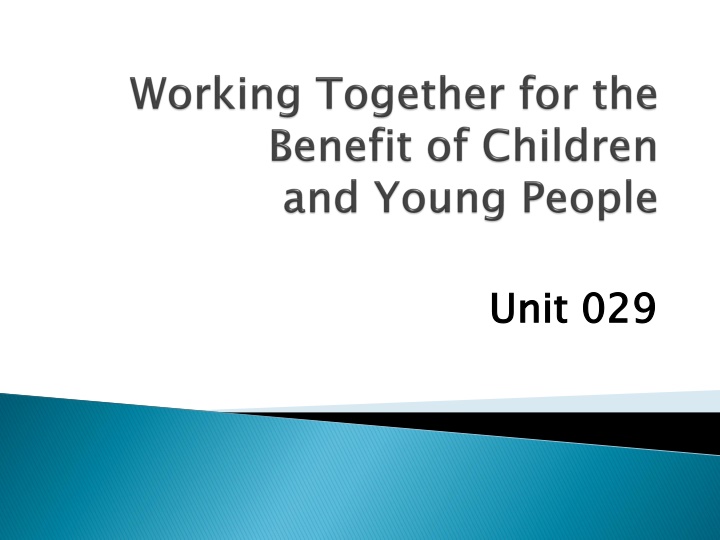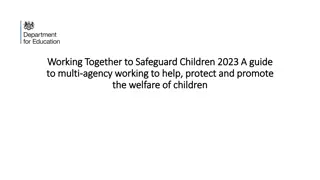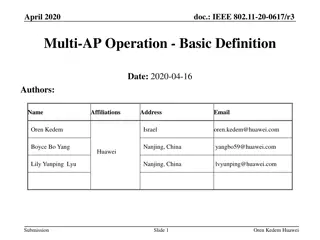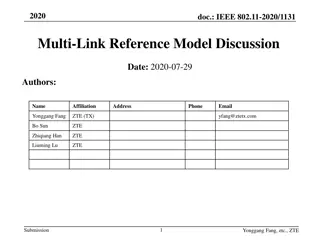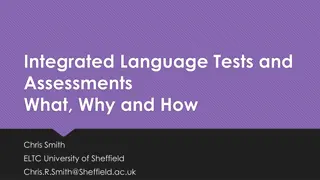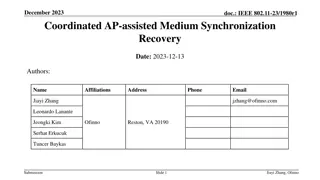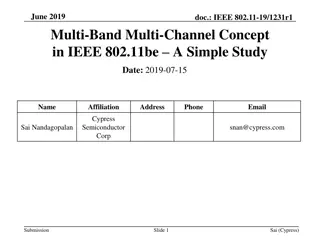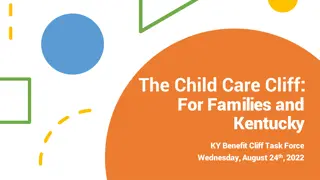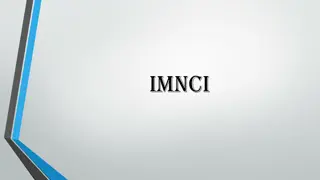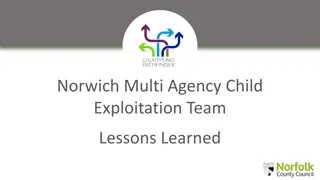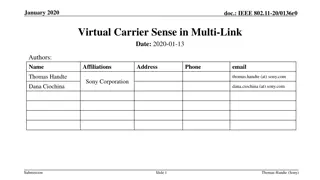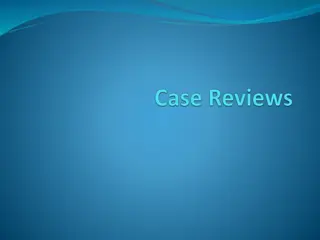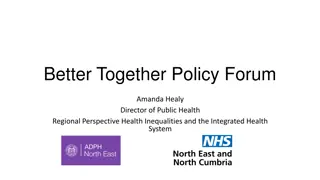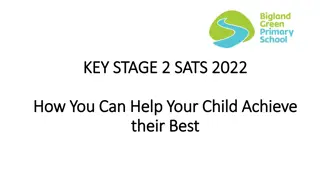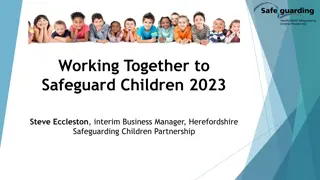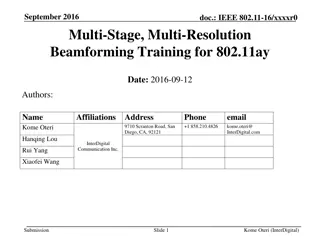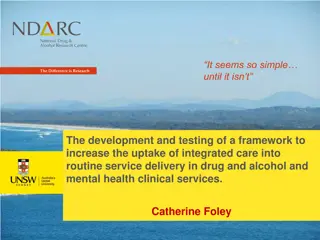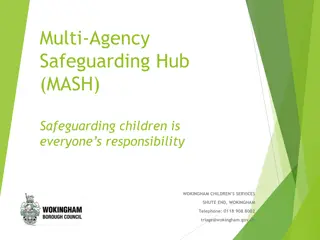Importance of Multi-Agency and Integrated Working in Child Services
Multi-agency and integrated working in child services involve collaboration among different agencies and professionals to meet the diverse needs of children and families. This approach ensures comprehensive care and support, leading to better outcomes and a holistic view of the child. Sharing information and working together are key components in enhancing children's well-being within the Every Child Matters framework.
Download Presentation

Please find below an Image/Link to download the presentation.
The content on the website is provided AS IS for your information and personal use only. It may not be sold, licensed, or shared on other websites without obtaining consent from the author.If you encounter any issues during the download, it is possible that the publisher has removed the file from their server.
You are allowed to download the files provided on this website for personal or commercial use, subject to the condition that they are used lawfully. All files are the property of their respective owners.
The content on the website is provided AS IS for your information and personal use only. It may not be sold, licensed, or shared on other websites without obtaining consent from the author.
E N D
Presentation Transcript
Unit 029 Unit 029
1.Explain the importance of multi-agency working and integrated working
Multi-agency and integrated working are terms used to describe the way in which services work together, in different ways, to meet the needs of children, young people and their families
This involves different agencies, services or teams of professionals working together to provide services to meet the needs of children, young people and their families Example when practitioners form health, education and social services work together to provide support for a family and their child, who has down s syndrome
This involves different services joining together, usually in the same building, to offer more effective care for children, young people and their families. Example in a children s centre, parents may be able to seek advice from a health visitor, attend a play session with their toddler and access a training programme in order to improve their own education or employment prospects
Services for children and young people can involve many different agencies, each with their own roles and responsibilities. Different professionals may work with children in a range of situations and will therefore gain different information.
So that everyone has an holistic view of the child it is extremely important that information is shared, both between the practitioners themselves and with the children s parents or main carers. This holistic approach is an important part of the Every Child Matters framework, which clearly states that professionals should work together in order to improve outcomes for children and their families.
2. Analyse how integrated working practices and multi-agency working in partnership deliver better outcomes for children and young people
Does the working together work? Is it good/bad? How does it effect all those involved?
3. Describe the functions of external agencies with whom your work setting or service interacts (Check within unit 25.2.4)
4. Explain common barriers to integrated working and multi-agency working and how these can be overcome
For integrated and multi-agency working to be effective, it is important for all professionals involved to respect each other. This requires an understanding of the different areas of expertise and experience, which is not always an easy process.
Roles may not be clearly defined Information is not shared or communication between partners is poor Approach not co-ordinated which can result in a duplication of services and confusion for everyone involved
Poor communication between partners Lack of information sharing between partners Lack of coordination between the different services Inaccurate or inconsistent record keeping Ineffective policies and procedures Lack of understanding about the roles or involvement of different partners Lack of evaluation and no review process of service provision
5. Explain how and why referrals are made between agencies
In order for professional to provide effective support for children and their families, they need to be fully aware of the help that is needed. This means that the various professionals involved need to communicate with each other, and the family, through the referral process.
A referral can be made by a professional practitioner a parent/main carer in some case the child/young person. Referrals can be made verbally - in person/telephone in writing - letter/email
Disability Behavioural problems Health problems asthma, allergies, intolerance, eczema Development problems ADHA, autism
Parent has a concern about their childs development Parent takes the child to see the health visitor Health visitor carries out checks and makes a further referral for a developmental assessment Further referral made by more specialised assessments (speech and language; hearing test; physical examination) Information is reported back to everyone concerned
6. Explain the assessment frameworks that are used in own UK home nation.
The Common assessment Framework is a standardised framework for assessing the needs of a child/young person. It is intended for use by practitioners in all agencies so they can communication and work more effectively together. The main aim of CAF is to help practitioners make an holistic assessment of the child s additional needs and to identify any support that may be required
Where families are receiving support from the different agencies; a lead professional usually be appointed The role of the lead professional is to a lead professional will Provide a single point of contact for families and help them to make choices Ensure that families receive appropriate intervention when needed Reduce overlap and avoid inconsistency from other practitioners
The CAF summary should highlight the strengths and needs of the child and family and identify what is required to meet the needs of the child and family The main sections include Development of the child (health and progress of learning) Parents/carers (how well parents are able to support their child s development) Family/environment (the impact of wider family and environment elements, such as housing)
Be able to communicate with others for professional purposes
3. Prepare reports that are accurate, legible, concise and meet legal requirements (Prepare reports lead responsibility (e.g. a school) it is acceptable for practitioners to produce an example report or to support the lead practitioner in completing reports that are accurate, legible, concise and meet legal requirements.) Prepare reports - - In some settings where this is not practitioner s
Be able to support organisational processes and procedures for recording, storing and sharing information
3. Analyse the potential tension between maintaining confidentiality with the need to disclose information: a. where abuse of a child or young person is suspected b. when it is suspected that a crime has been/may be committed. (check within unit 51.4.3)
